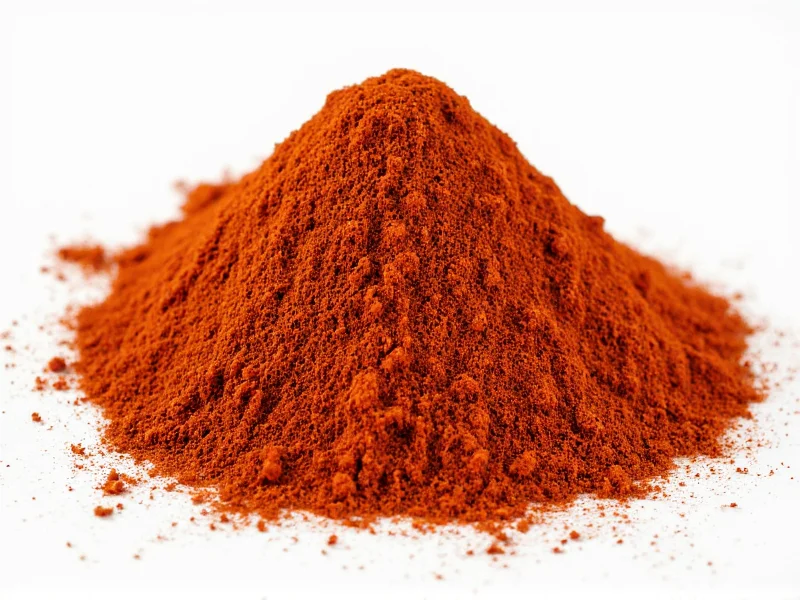Understanding Arbol Spice: Mexico's Versatile Chili Powerhouse
Chile de árbol, commonly known as arbol spice in its dried form, has been a staple in Mexican kitchens for centuries. These slender peppers earned their Spanish name ("tree chili") due to their growth pattern on woody shrubs. Unlike many chilies that develop complex flavors through smoking, arbol peppers deliver their distinctive taste naturally through sun-drying.
Physical Characteristics and Heat Profile
Arbol chilies measure approximately 5-7.5 cm (2-3 inches) in length with a diameter of just 1 cm. Their smooth, glossy skin transitions from bright green to deep red as they mature. The heat level sits firmly in the medium-hot range, comparable to cayenne pepper but with a more nuanced flavor profile.
| Chili Variety | Scoville Heat Units | Flavor Profile | Common Uses |
|---|---|---|---|
| Arbol Spice | 15,000-30,000 | Bright, smoky, nutty | Salsas, adobos, infused oils |
| Cayenne | 30,000-50,000 | Sharp, pungent | Spice blends, hot sauces |
| Guajillo | 2,500-5,000 | Fruity, tea-like | Moles, stews |
| Chipotle | 2,500-8,000 | Smoky, sweet | Barbecue sauces, braises |
Culinary Applications of Arbol Spice
Chefs value arbol spice for its clean heat that doesn't overwhelm other ingredients. The peppers work exceptionally well in three primary forms:
- Whole dried peppers: Toasted in dry pans then rehydrated for sauces or mole blends
- Crushed flakes: Added directly to dishes for controlled heat and visual appeal
- Fine powder: Blended with other spices for rubs or seasoning mixes
Traditional Mexican dishes featuring arbol spice include salsa roja, adobo sauce, and various seafood preparations. The peppers' thin walls make them particularly suitable for creating smooth sauces without fibrous texture.
Practical Cooking Tips for Arbol Spice
When working with arbol chilies, consider these professional techniques:
- Toast before use: Briefly heat whole peppers in a dry skillet until fragrant (about 30 seconds per side) to enhance flavor complexity
- Control heat exposure: Remove seeds and membranes for milder flavor; include them for maximum heat
- Rehydration method: Soak in hot water for 15-20 minutes until pliable, reserving soaking liquid for sauces
- Infused oils: Steep dried peppers in warm oil for 10 minutes for instant flavor infusion
Substituting Arbol Spice When Unavailable
While nothing perfectly replicates arbol's unique flavor, these alternatives work in various applications:
- Cayenne pepper: Use 1:1 ratio for heat, but expect sharper flavor without nuttiness
- Thai bird chilies: Similar heat level but more floral; best for fresh applications
- Guajillo + cayenne blend: Mix 3 parts guajillo to 1 part cayenne for balanced heat and flavor
- Crushed red pepper flakes: Adjust quantity carefully as heat levels vary significantly by brand
Storage Recommendations for Maximum Freshness
To preserve arbol spice's vibrant color and flavor:
- Store whole dried peppers in airtight containers away from light and moisture
- Keep in cool pantry (below 70°F/21°C) for up to 1 year
- Grind only what you'll use within 2-3 months for optimal flavor
- Freeze whole peppers in vacuum-sealed bags for extended storage (up to 2 years)
Nutritional Benefits of Arbol Chilies
Beyond their culinary value, arbol peppers offer notable nutritional properties. A single dried arbol chili (approximately 3g) contains:
- Nearly 100% of daily vitamin A requirements
- Significant vitamin C content (about 30% of daily value)
- B vitamins including B6 and folate
- Minerals like potassium and manganese
- Capsaicin, the compound responsible for heat with potential metabolic benefits
Safety Considerations When Handling Arbol Spice
The capsaicin in arbol chilies requires careful handling:
- Always wear gloves when processing large quantities
- Avoid touching face or eyes during preparation
- Wash hands thoroughly with soap and water after handling
- Use separate cutting boards for chili preparation
- Neutralize accidental skin contact with milk or oil, not water
Where to Source Quality Arbol Spice
For authentic arbol chilies, seek products labeled "chile de árbol" from Mexican producers. Look for:
- Vibrant red color without dark spots or blemishes
- Smooth, unbroken skin texture
- Flexible but not brittle when bent
- Packaged with harvest date information
- Origin-specific labeling (Mexican-grown preferred)











 浙公网安备
33010002000092号
浙公网安备
33010002000092号 浙B2-20120091-4
浙B2-20120091-4